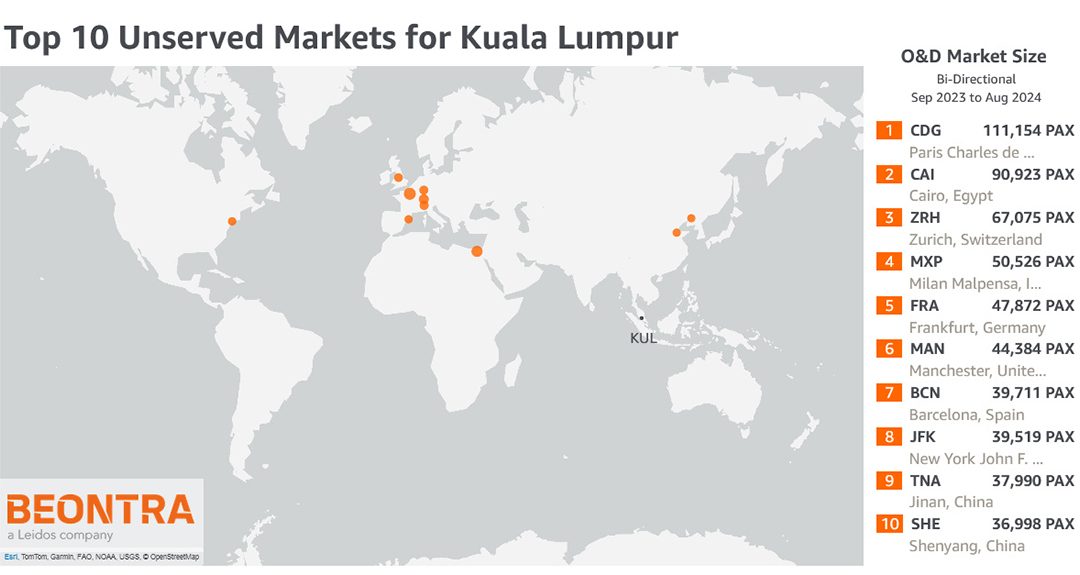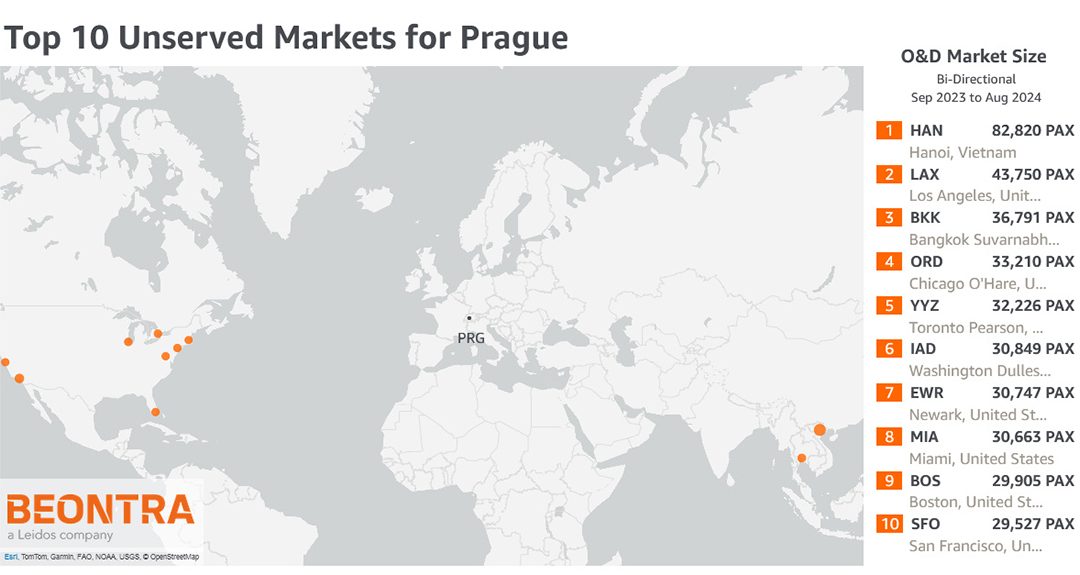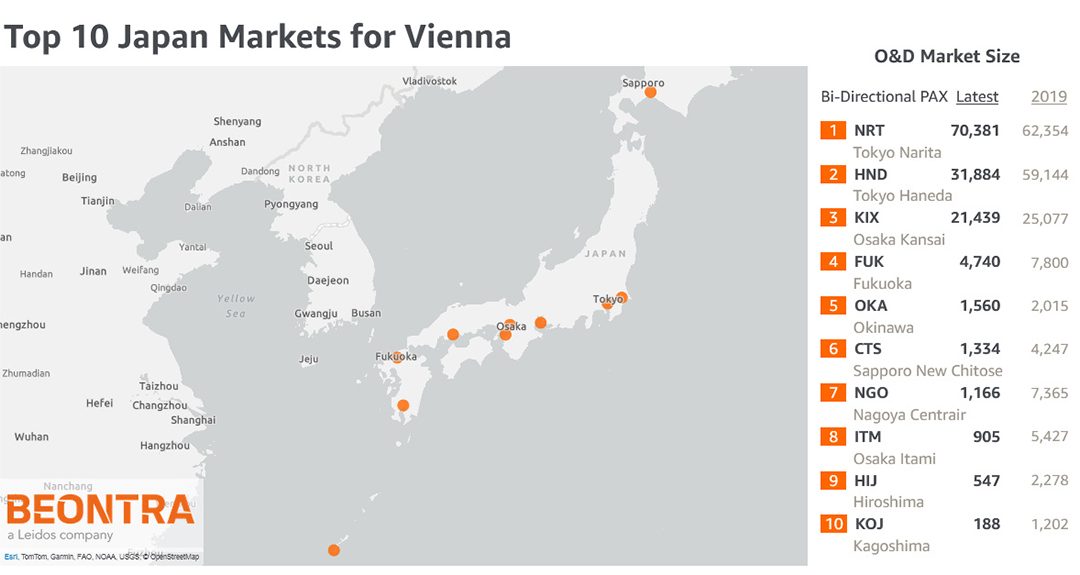
MH to restart KUL-CDG 🚀
Great news! Malaysia Airlines has announced it will restart its service from Kuala Lumpur (KUL) to Paris Charles de Gaulle (CDG) in March 2025. Paris CDG isn’t just another destination—it’s currently the #1 unserved market from Kuala Lumpur by passenger demand, making this move a significant step in reconnecting key long-haul markets. 🌍
But Paris is only the beginning. Using BEONTRA’s Route Forecasting solution, we’ve uncovered other top unserved markets from Kuala Lumpur, including Cairo (CAI), Zurich (ZRH), Milan Malpensa (MXP), and Frankfurt (FRA). These routes represent untapped potential, offering substantial opportunities for future growth.
As Malaysia Airlines reestablishes its global presence, BEONTRA’s data-driven insights highlight clear opportunities for expanding their route network. The resumption of service to Paris is a strong start, and we’re excited to see which routes could follow next!
Interested in how BEONTRA can help your airport or airline unlock new market potential? Find out more: www.beontra.com/solutions.




